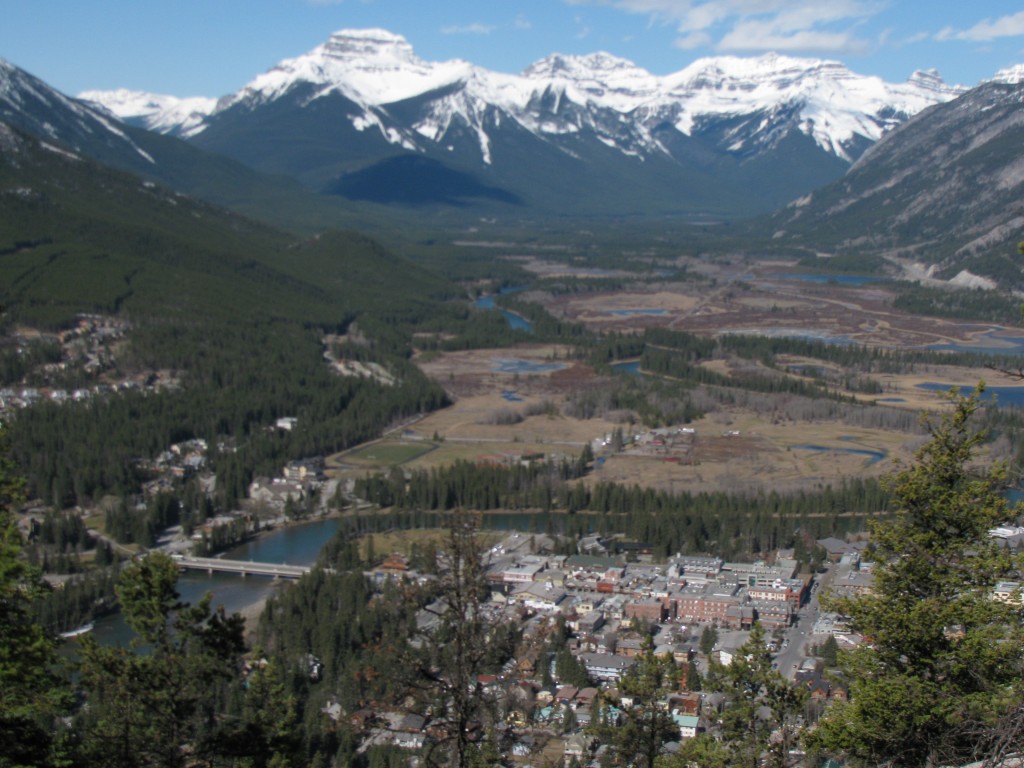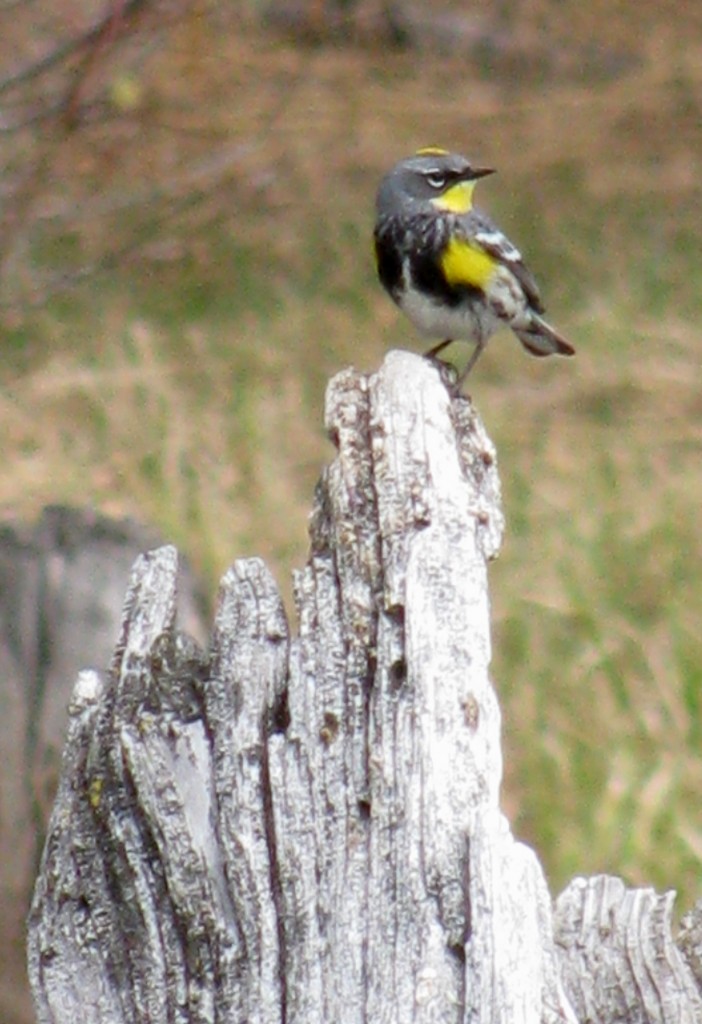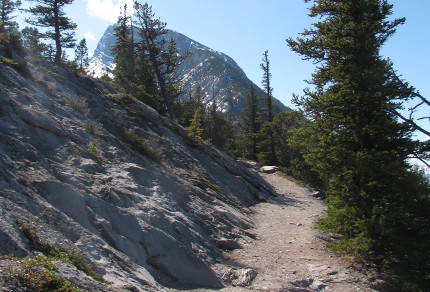
Trail up Tunnel Mountain, Banff, Alberta (© Magi Nams)
Brilliant morning sunshine glared off snow-smeared mountains and pale rock as I hiked up Tunnel Mountain, a 1692-metre peak jutting upward between the Bow River and TransCanada Highway, with the townsite of Banff nestled at its base to the north, east, and west, but not south, where raw, sheer cliffs plunge precipitously and entice climbers to accept their challenge. Birds now familiar to me in Banff – ruby-crowned kinglets, yellow-rumped warblers, red-breasted nuthatches, mountain chickadees, robins, pine siskins, black-throated green warblers, Townsend’s solitaire – filled the air with song, and I discerned the shrill, agitated calls of a kestrel. Open sections of rocky terrain offered views out over the Bow River Valley, and from the peak, I looked down onto the Banff townsite, with its neat streets so dwarfed by the majesty of the surrounding landscape.

Banff and the Bow River Valley viewed from Tunnel Mountain, with Marsh Loop in centre left and Vermilion Lakes in far centre right (© Magi Nams)
After a surprisingly quick climb and descent of Tunnel Mountain, I again drove across the Bow River, this time checking out the Bow Falls and its corrugated rapids before abandoning repeated attempts to locate access to the Spray River Loop near the falls. Racing against time and my scheduled meeting with Vilis at the conclusion of the Canadian Society for Ecology and Evolution conference at Banff Centre, I drove to a carpark at Fenland Trail and hiked the trail to a link with Vermilion Lakes Drive, a quiet, paved road to the north of 1st, 2nd, and 3rd Vermilion Lakes.

Peaceful Pool at 2nd Vermilion Lake, Banff, Alberta (© Magi Nams)
I strode the road westward, gazing out over expanses of marshland and the shallow Vermilion Lakes occupying the Bow River floodplain north of the river. Cloud and wind robbed me of warm sunshine, raising goosebumps on my skin and giving me a taste of the capriciousness of mountain weather. Green-winged teal dabbled in 1st Vermilion Lake, and Canada geese foraged in muddy, shoreline vegetation. A pileated woodpecker hammered resounding blows into a tree at the lake’s edge with its pick-axe beak, and a great blue heron stood motionless on a mudflat, waiting to strike prey with quick, darting death. My reward for that cold walk was yellow-rumped warblers hawking insects over a protected pool of green water haunted by stumps of dead trees at the edge of 2nd Vermilion Lake.
After I returned to Banff Centre to meet Vilis, he asked me to recommend a trail to hike for the remainder of the afternoon. I chose Marsh Trail and Marsh Loop, which I’d hiked yesterday, then we walked on to Sundance Canyon. Countless yellow-rumped warblers and spectacular mountain views delighted us, as did a muskrat diving into a green pond, leaving its shining V-wake behind it, and an elk grazing in a dried field next to the marsh. I slogged the last kilometre or so back to the car, weary from nearly six hours of hiking. Our time in Banff was nearly up, but it had been rich with learning for Vilis and natural spendours and wildlife for me.

Yellow-rumped Warbler at 2nd Vermilion Lake, Banff, Alberta (© Magi Nams)
Today’s fauna: ruby-crowned kinglets, red-breasted nuthatches, mountain chickadees, American robins, yellow-rumped warblers, American kestrel, Townsend’s solitaire, black-throated green warblers, pine siskins, Canada geese, Columbian ground squirrels, dark-eyed juncos, golden-crowned kinglet, black-billed magpie, green-winged teal, belted kingfisher, great blue heron, pileated woodpecker, mallard, red-winged blackbirds, elk, muskrat.


